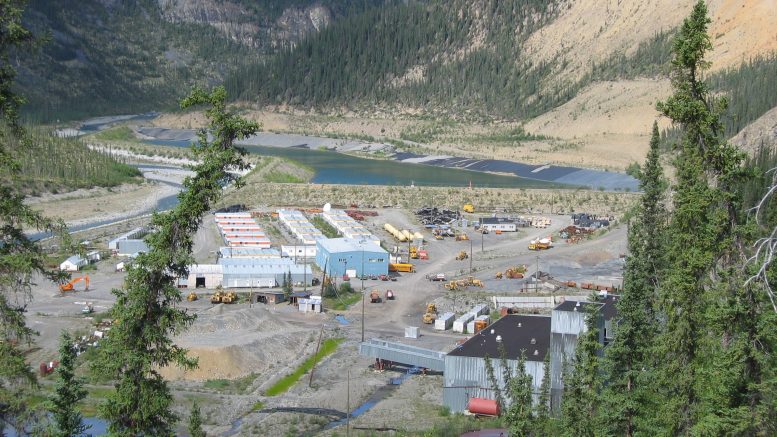Canada’s Northwest Territories is relatively remote, but endowed with mineral potential. Despite the region’s harsh winters and infrastructure deficit, the Northwest Territories hosts Canada’s largest and oldest producing diamond mines, Ekati and Diavik, and the new Gahcho Kué diamond mine. Along with diamonds, the region has a handful of advanced projects, including Prairie Creek, Nico and Nechalacho.
Prairie Creek
Canadian Zinc (TSX: CNZ; OTCBB: CZICF) aims to bring its wholly owned Prairie Creek zinc-lead-silver project online by the end of 2019.
The project has a colourful history. Located 500 km west of Yellowknife in the Mackenzie Mountains, the Hunt brothers acquired Prairie Creek in 1966 and invested $65 million into the property. Before putting Prairie Creek into production, silver prices collapsed and bankruptcy proceedings halted their plans in 1983.
Nearly a decade later, Canadian Zinc bought Prairie Creek for $2 million. Since then, it has focused on drilling and permitting the property.
Canadian Zinc’s final permit to upgrade the access road from winter use to all-season use is undergoing environmental assessment by the Mackenzie Valley Environmental Impact Review Board, with a decision expected before mid-year, the company’s CEO John Kearney notes.

The portal to underground workings at Canadian Zinc’s Prairie Creek zinc-lead-silver project in the Northwest Territories. Credit: Canadian Zinc.
According to a 2016 prefeasibility study, Prairie Creek could support a 17-year underground mine life, with an annual production of 60,000 tonnes zinc concentrate and 55,000 tonnes lead concentrate, containing 86 million lb. zinc and 82 million lb. lead, along with copper and silver by-products. Estimated start-up costs are $244 million, including a contingency.
Canadian Zinc is discussing project debt with lenders and has undertaken a bankable feasibility study. As part of the study, the company has retained SGS Canada for further mineral processing optimization to improve metal recoveries and trim milling production costs, among other things.
“Assuming the project financing is in place in 2017, and construction starts in 2018, Prairie Creek could be in production by the end of 2019,” Kearney says.
NICO
Fortune Minerals (TSX: FT; OTCQX: FTMDF) owns the Nico cobalt-gold-bismuth-copper project, 160 km northwest of Yellowknife. The project consists of a proposed mine and mill in the Northwest Territories and a proposed refinery in Saskatchewan to process the Nico concentrates.
Since discovering the Nico deposit in 1996, Fortune has spent $116 million advancing the project. It has secured key permits, including environmental assessment approvals for the Nico mine, mill and refinery. For the latter, the company notes it still needs to complete the rezoning for the land it owns in Saskatchewan.

A truck hauls ore at Fortune Minerals’ NICO gold-cobalt-bismuth-copper project in the Northwest Territories during test mining conducted in 2006 and 2007. Credit: Fortune Minerals.
An updated 2014 feasibility study envisions that a combined open-pit and underground mine at Nico could annually produce 41,300 oz. gold, 1,615 tonnes cobalt contained in battery-grade cobalt sulphate, 1,750 tonnes bismuth contained in metal ingots and oxide powder, and 265 tonnes copper a year. Based on reserves, Nico has a projected 21-year mine life. Start-up costs are $589 million.
“We are working on the project financing for construction and have engaged a financial advisor to assist with this process,” Troy Nazarewicz, the company’s manager of investor relations, said in an email.
Once the financing is in place, construction should take two to two and a half years to complete.
On Jan. 12, Fortune reported federal government funding for the Tlicho all-season road (TASR) to the community of Whati, 50 km south of the proposed Nico mine. The TASR will allow Fortune to truck metal concentrates to the railhead at Hay River for delivery to the refinery in Saskatchewan.
The firm also owns the Sue-Dianne copper-silver-gold deposit, 25 km north of the Nico project.
Nechalacho
Avalon Advanced Materials’ (TSX; AVL; OTCQX: AVLNF) wholly owned Nechalacho rare earth elements project is on hold until the company secures more funding. The project, previously Avalon’s flagship asset, is 100 km southeast of Yellowknife.
Since acquiring Nechalacho in 2005, Avalon has invested nearly $100 million as of September 2014 into the property. The work conducted to date includes metallurgical, environmental and market studies, as well as over 120,000 metres of diamond drilling.

Core samples at Avalon’s Nechalacho rare earth elements project near Thor Lake, Northwest Territories. Credit: Avalon Advanced Materials.
A 2013 feasibility study pegged the price tag for a mine at Nechalacho at $1.6 billion, including a 13% contingency and $122 million in sustaining capital.
“We have slowed down work on the Nechalacho project since the rare earths market went quiet in 2013, but continue to do work intermittently in anticipation of renewed demand and market interest in rare earths,” Don Bubar, Avalon’s president and CEO, said in an email. “We are also looking at opportunities to take advantage of the many other rare metal resources on the property, and worked on a lithium pegmatite occurrence there in 2016.”
Since the feasibility study, Avalon has initiated metallurgical test work with the goal of optimizing the process flow sheets to boost recoveries and trim project costs. This involved improving the concentrator flow sheet and designing a new flow sheet for the hydrometallurgical plant, using an alkali cracking process to treat concentrate.
Avalon has planned a pilot plant campaign for Nechalacho, noting it will proceed when funding becomes available.
Its current priorities are the Separation Rapids lithium project in Ontario and the East Kemptville tin-indium project in Nova Scotia.


Be the first to comment on "Development potential in NWT"